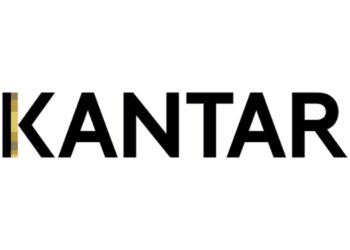Mumbai: Kantar reveals the top 10 key trends that will impact consumer behavior in India in the year 2020. The trends touch upon a range of categories including FMCG, durables, home buying, transportation, loans, infrastructure, online engagements, entertainment, imported goods and much more.

Speaking about the trends, Preeti Reddy, CEO, South Asia, Insights Division, Kantar stated, “If the consumer behavior in 2019 was driven by the desire to seek stability, the overriding sentiment is one of ‘wait and watch’ in 2020 amongst Indian consumers. Meanwhile, with their wallets squeezed and aspirations intact, a large-scale reprioritization of spending is underway across the board”.
Kantar- Consumer Trends for 2020
WAITING FOR THE ECONOMY TO RECOVER
Declining household saving is forcing shoppers to buy smaller packs and cheaper variants of household consumables. Apart from millennials reluctant to own homes, tighter budgets and job uncertainty mean that families will put off purchasing homes. And yet the affordability and accessibility of credit, particularly with the entry of digital lending players that offer instant loans, will ease this scenario. [Lenders have seen a 50% surge in loan applications for holidays]
WAITING FOR DEALS
97% of Indian households in 2019 bought at least one CPG (consumer packaged goods) product on promotion, with overall promotion volumes up by 6.4%. Brands have no option but to find new ways of rewarding smart, well-informed, deal-seeking consumers, as information gathering becomes an integral part of the shopping experience. [85% of consumers check at least two data points other than prices and discounts when purchasing]
BUT NOT WAITING TO SELL
Social commerce platforms like Meesho, GlowRoad, Dealshare, Mall18 will tap into the next wave of online shoppers [200 million] from smaller cities of India with very different behaviour and needs vs the current group. Their transactions are hyperlocal in nature and work by sharing deals over WhatsApp. New platforms are enabling sellers to find buyers by leveraging their social networks. Bulbul and Simsim users interact with sellers during live video streaming and make their purchases immediately
WAITING FOR INFRASTRUCTURE
Tired waiting for roads, consumers have embraced technological solutions such as car pooling and shared bus rides [The shared transportation market will grow to ₹ 35,000 crores by 2025] Cities plagued by congestion and infrastructure troubles, such as Mumbai and Bengaluru, are quick adopters. The lack of action towards improving the abysmal quality of air is encouraging people to work from home, even as solutions such as air purifiers and oxygen bars emerge to give them a breather.
NOT WAITING TO DEAL WITH WASTE
22% of Indians say that plastic wastage is the top concern for them environmentally – significantly higher than the global average of 15% [53% of Indian consumers will pay more for environment friendly products] A similar proportion are prepared to make changes to their lifestyle for the environment. Expect greater awareness and action around food waste, and trends such as upcycling to take off, spurred by conscious business and activist youth.
WON’T WAIT FOR THE EXPERIENCE
Tighter control overspending does not necessarily mean that consumers are cutting back on experiences. 37% of urban Indians say that they finance experiences by trading down in certain product categories [including jewelry, mobile phones, apparel, and home furnishings] Some consumers are optimizing their spends by renting kitchen appliances, clothes, and furniture; 25% of consumers would consider renting in the future.
WON’T SHY AWAY FROM RISK
Uncertainty in the social and economic environment has propelled Indian consumers to embrace new opportunities and create alternative futures for themselves. India is now witnessing reverse migration, as 2nd tier cities and state capitals emerge as attractive places due to lower land and home prices, cleaner air and availability of quality education. Consumption-wise, there is rising experimentation with an array of offerings on e-commerce platforms, even as consumers seek ways to mitigate risk of redundancy by reskilling themselves through online courses. [93% of Indian learners are in the 18-39 age bracket]
WON’T WAIT FOR RCEP
Despite the political reluctance to leverage trade opportunities within Asian, Chinese, Japanese and Korean consumer brands – which have won the hearts and wallets of Indian consumers – they will continue to do well. Expect an integration of technology and content in many of these products. [from home appliances to automobiles to social platforms such as TikTok] While Korean pop culture will capture the imagination of youth across campuses and small-town India, Tokyo’s hosting the Olympics will create greater engagement with Japanese brands.
WILL WATCH & PLAY/RELAX
Our mobile gaming study reveals that 76% of gamers indulge in playing games on their mobile phone more than twice a day, and 31% play 4-5 times a day. [70% of gamers spend more than half an hour and 42% spend more than an hour playing mobile games] In-app purchases in online and mobile games present developers with financial opportunity. Some brands will deploy ASMR (autonomous sensory meridian response) – videos using audio stimuli like sounds of nature, mellow music, people whispering – to relax, soothe or invigorate viewers.
WILL WATCH LOCAL
An average Indian spends 6.2 hours consuming online content daily. Going forward, spending per month on digital media content is expected to grow by 2.5 times. 95% of online video consumption is in Indian languages. [Bengali content growing more than 100 percent year-on-year in watch time] Marketers will look towards online publishers and media companies to build engagement by learning techniques like Transmedia Storytelling, where single narrative cuts across multiple platforms and formats using available digital technologies

















